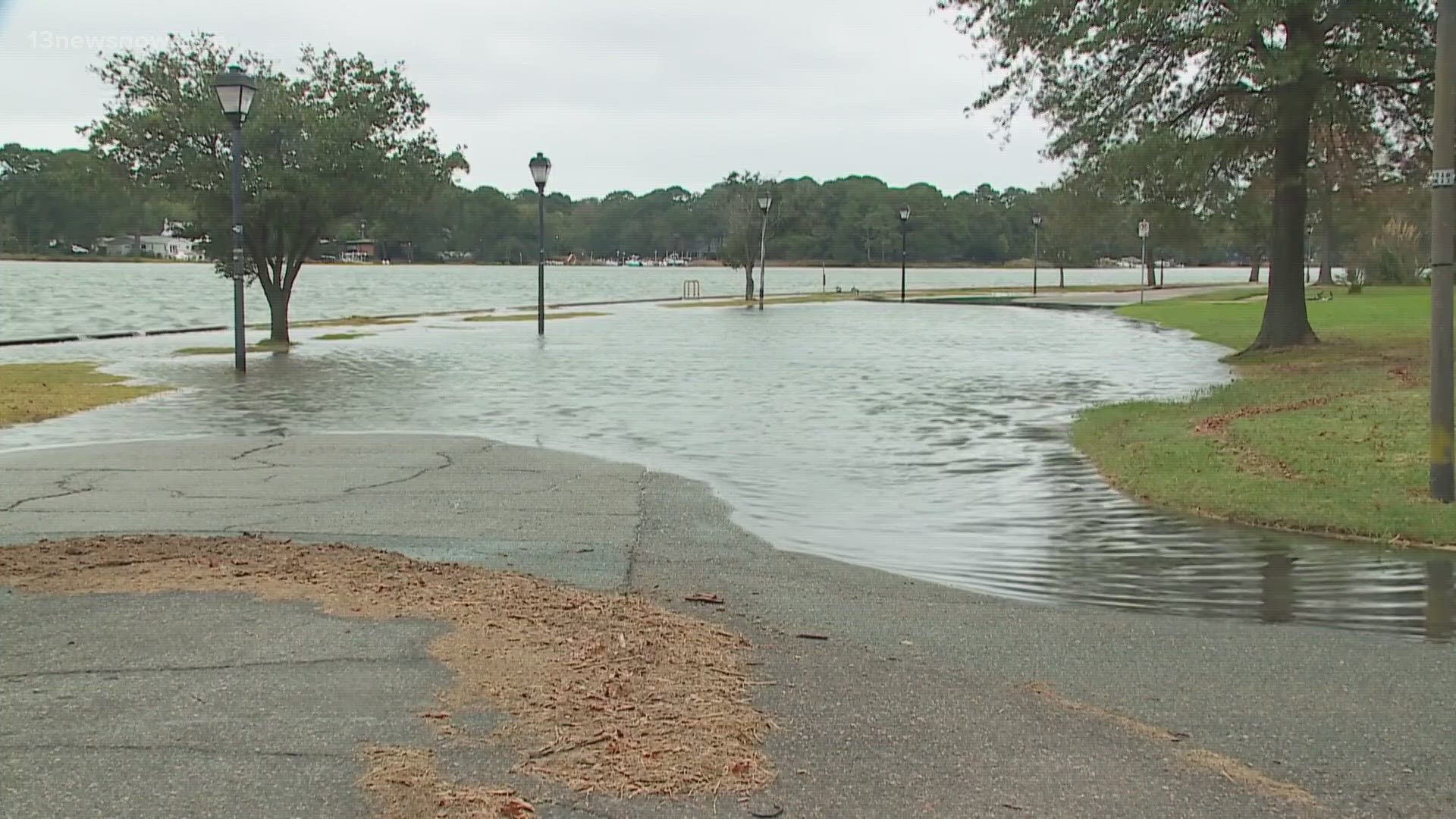NORFOLK, Va. — Plans to mitigate flooding in Norfolk are moving forward.
“Here in Hampton Roads, people know that sea level rise is real," said U.S. Senator Mark Warner. "They see churches flooded. They see homes flooded.”
That reality has leaders with the City of Norfolk moving forward with a plan to prevent coastal flooding.
An agreement on Monday morning between Norfolk officials and the U.S. Army Corps of Engineers will solidify a partnership on the Resilient Norfolk Coastal Storm Risk Management Project. It allows them to access nearly $399 million through the Bipartisan Infrastructure Law.
“These dollars came because a group of us said we can no longer kick the can on infrastructure,” Warner said.
Congress passed the Bipartisan Infrastructure Law, which was signed into law November 2021.
"After years of working toward this agreement, I'm pleased that this down payment on the resources we need to help protect Norfolk through the Coastal Storm Risk Management Project is finally being delivered," said Sen. Tim Kaine. "I will continue to do all I can to secure additional resources to protect Virginia's coastal communities and to ensure that Virginia is a leader in the innovative technologies we need to tackle climate change."
“The $400 million from the federal government is just the first installment,” said Norfolk Mayor Kenny Alexander.
Kristin Mazur, the coastal storm risk program manager with the U.S. Army Corps of Engineers, said this marks a milestone and opens new doors.
“Now, we're still in design, we have a lot of work to do," she said. "This allows us to access more funding... to be able to start construction on the project.”
The Resilient Norfolk Coastal Storm Risk Management Project is a $2.6 billion initiative. The 10-year project includes multiple reduction features like a flood wall, levees, and pump stations.
“We’re pre-disaster," said Kyle Spencer, Norfolk's chief resilience officer. "So, this is really important for us to get going here early and hopefully get some things built before we have a major storm event.”
The project covers certain areas of the city including downtown, Pretty Lake, Lafayette, and Broad Creek. Other areas like Campostella and Berkley would see home elevations, basement fills, and floodproofing.
Project managers hope to start construction on the first phase within a year. The phase includes building levees, flood walls, and two pump stations.

